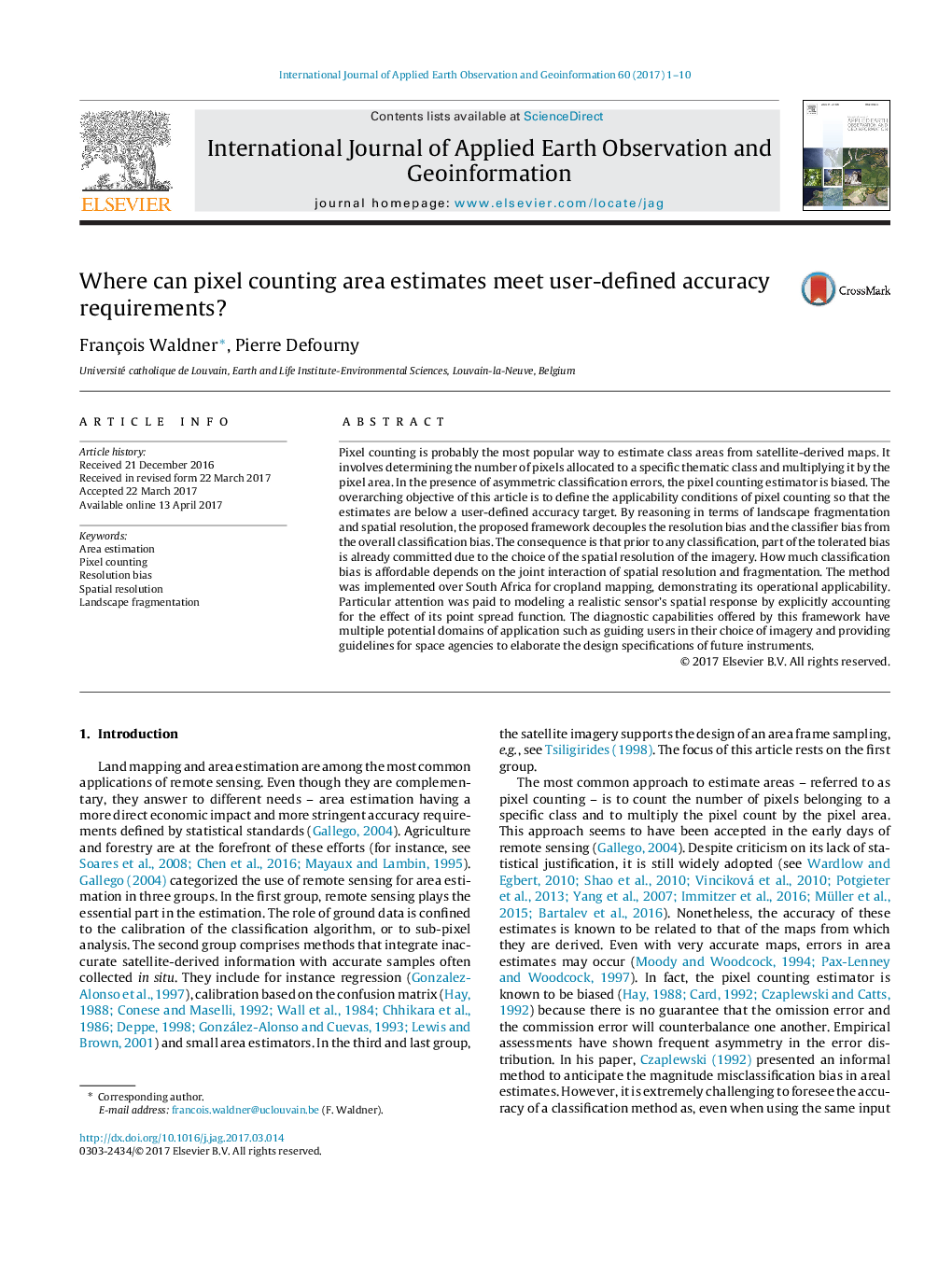| Article ID | Journal | Published Year | Pages | File Type |
|---|---|---|---|---|
| 5755509 | International Journal of Applied Earth Observation and Geoinformation | 2017 | 10 Pages |
â¢The area estimation bias was separated into a classifier bias and resolution bias.â¢Landscape fragmentation and spatial resolution predict jointly the resolution bias.â¢The maximum classifier bias that can tolerated by users is computable spatially.â¢The appropriate resolution and applicability domain of area estimation can be mapped.â¢Modeling the sensor point spread function further reduces the applicability domain.
Pixel counting is probably the most popular way to estimate class areas from satellite-derived maps. It involves determining the number of pixels allocated to a specific thematic class and multiplying it by the pixel area. In the presence of asymmetric classification errors, the pixel counting estimator is biased. The overarching objective of this article is to define the applicability conditions of pixel counting so that the estimates are below a user-defined accuracy target. By reasoning in terms of landscape fragmentation and spatial resolution, the proposed framework decouples the resolution bias and the classifier bias from the overall classification bias. The consequence is that prior to any classification, part of the tolerated bias is already committed due to the choice of the spatial resolution of the imagery. How much classification bias is affordable depends on the joint interaction of spatial resolution and fragmentation. The method was implemented over South Africa for cropland mapping, demonstrating its operational applicability. Particular attention was paid to modeling a realistic sensor's spatial response by explicitly accounting for the effect of its point spread function. The diagnostic capabilities offered by this framework have multiple potential domains of application such as guiding users in their choice of imagery and providing guidelines for space agencies to elaborate the design specifications of future instruments.
Graphical abstractDownload high-res image (55KB)Download full-size image
